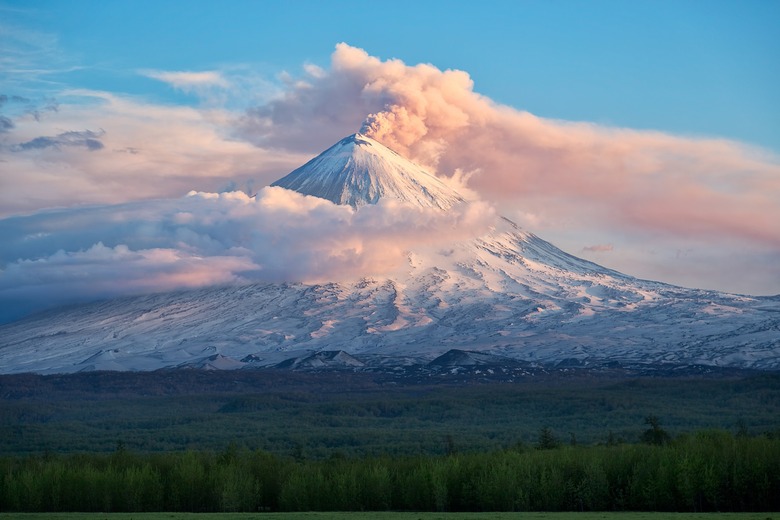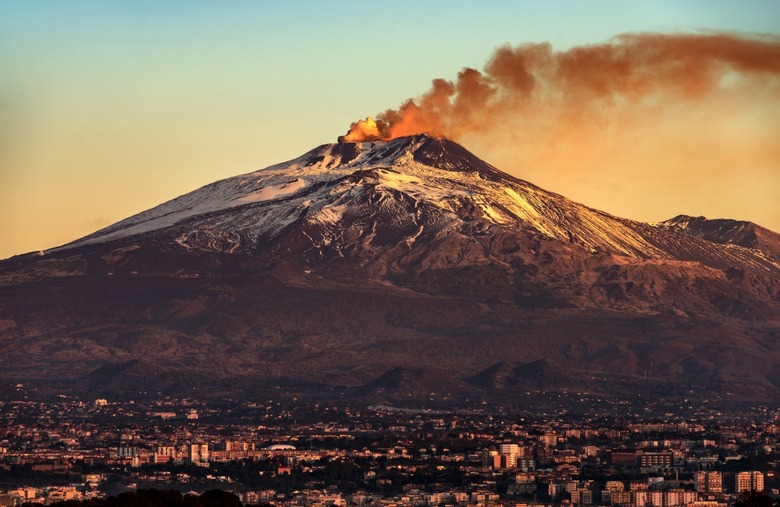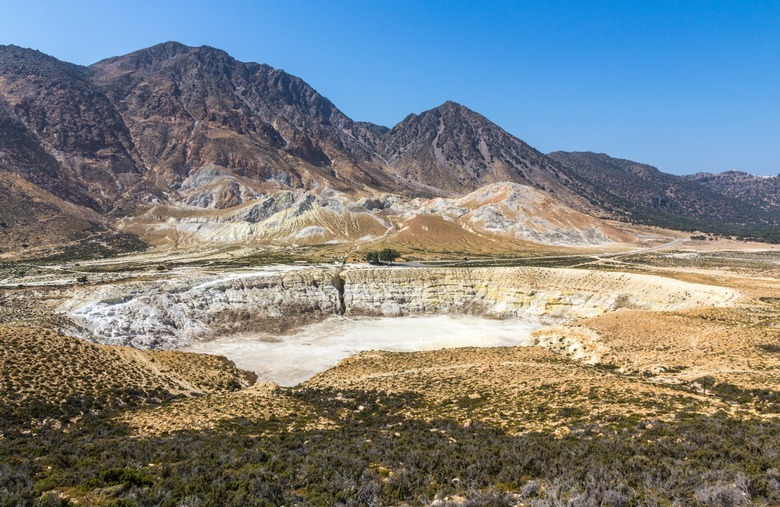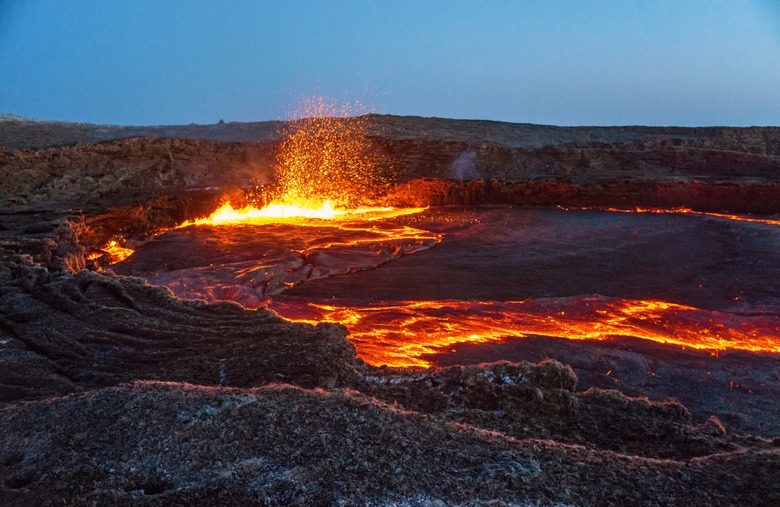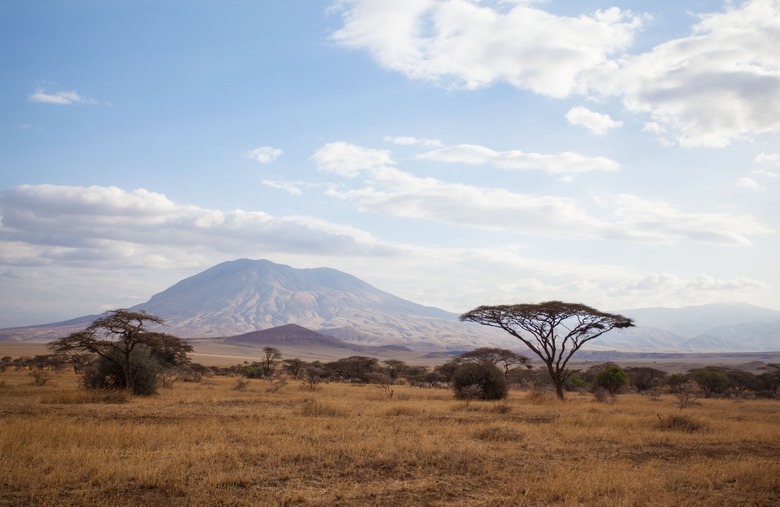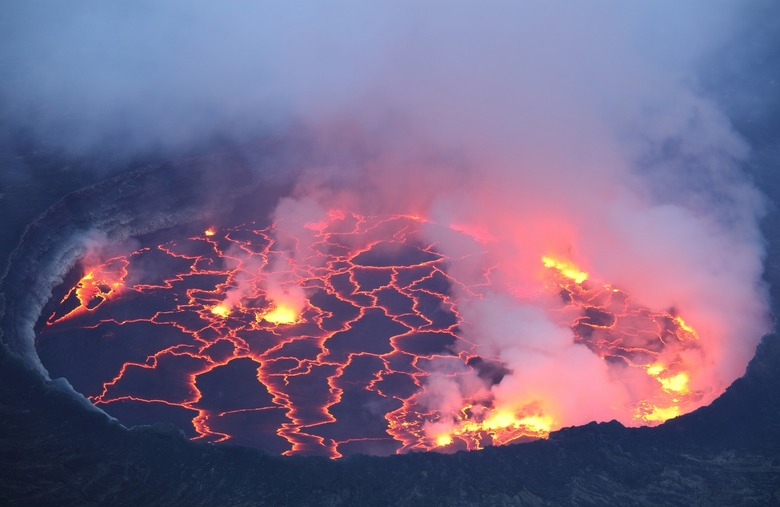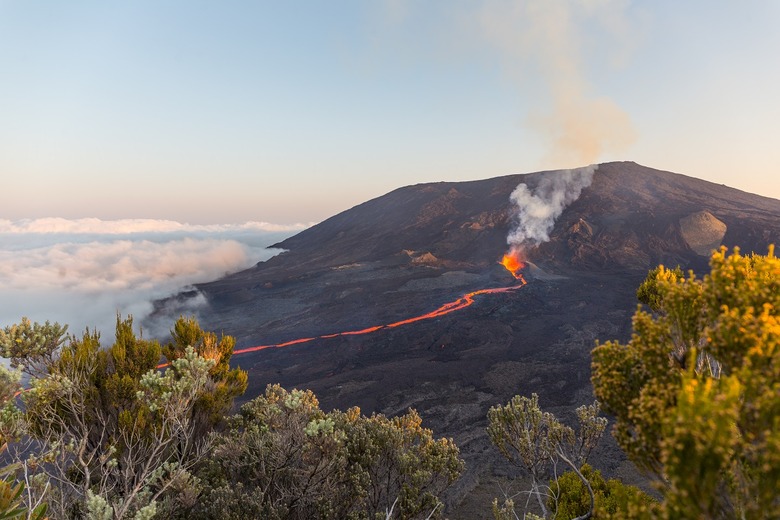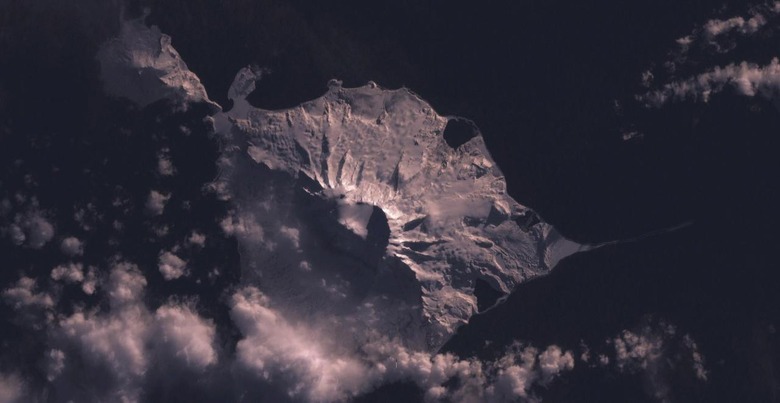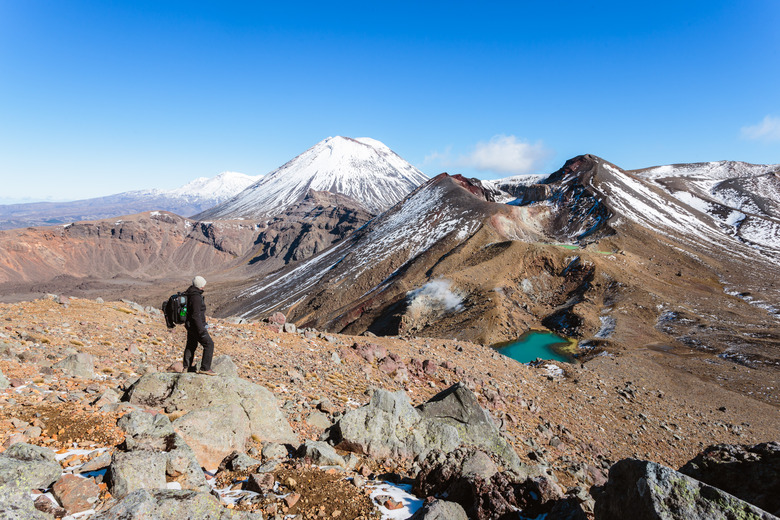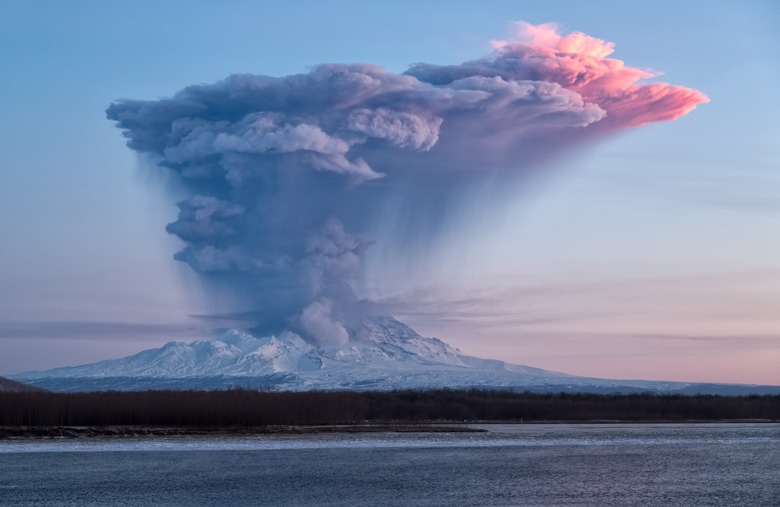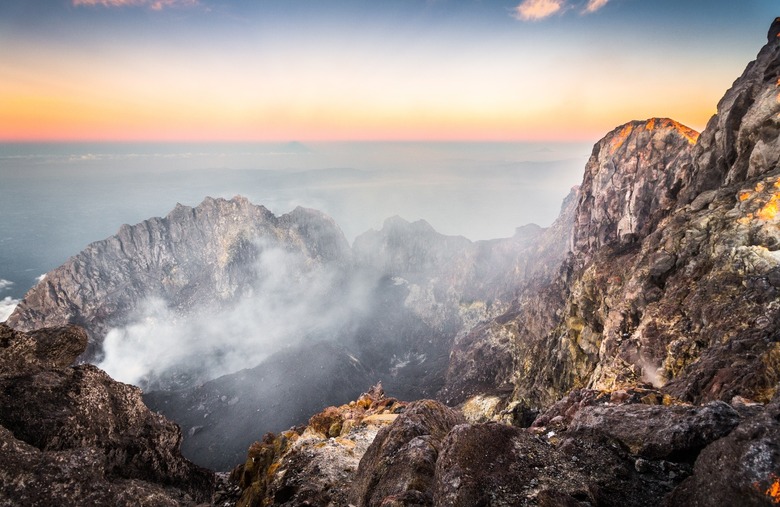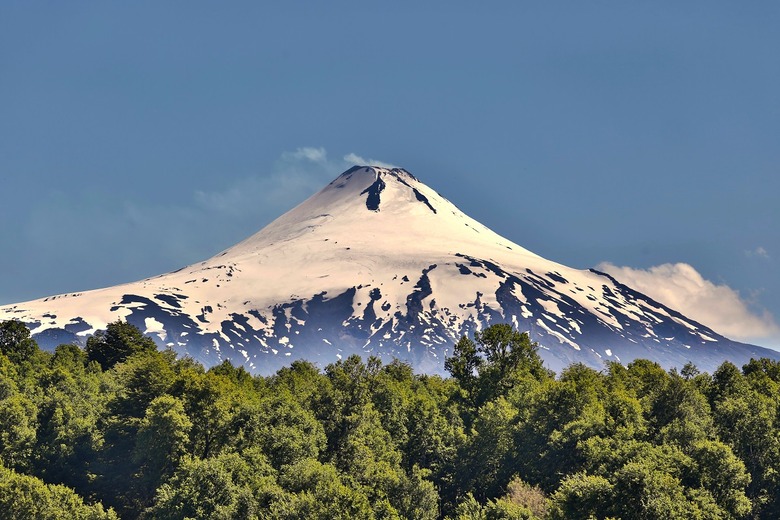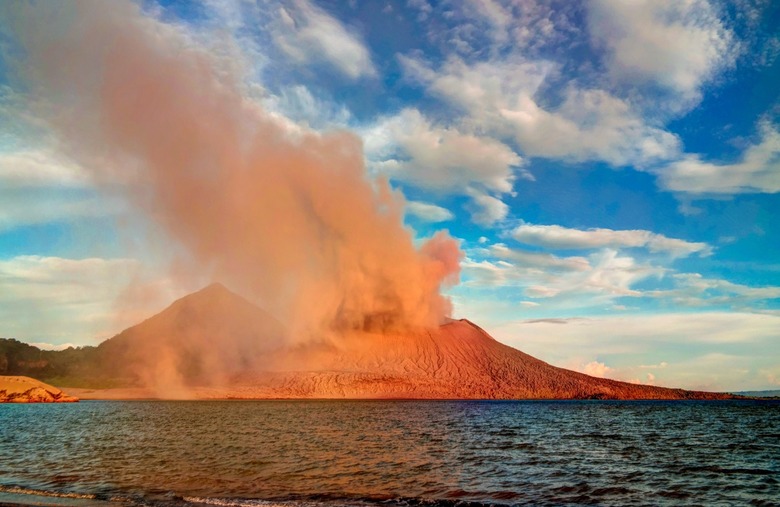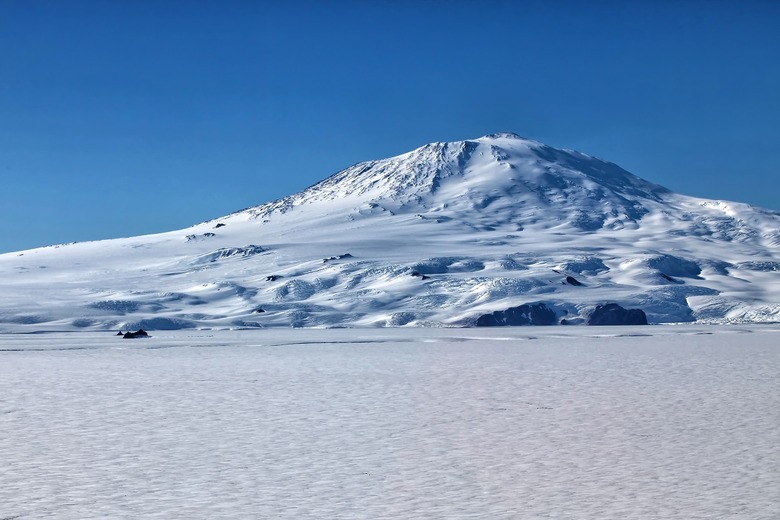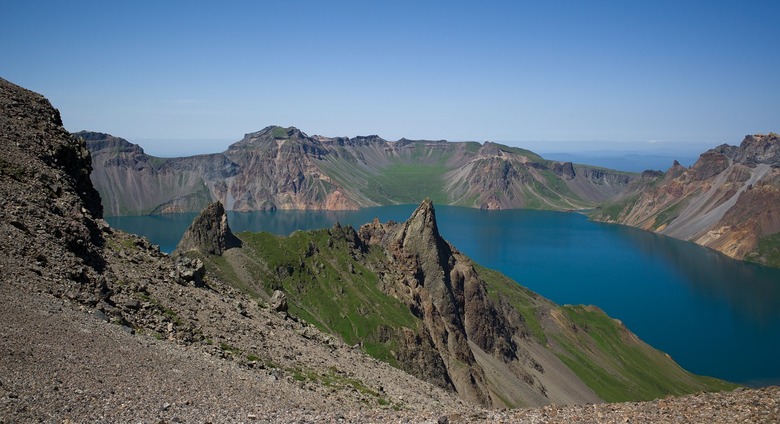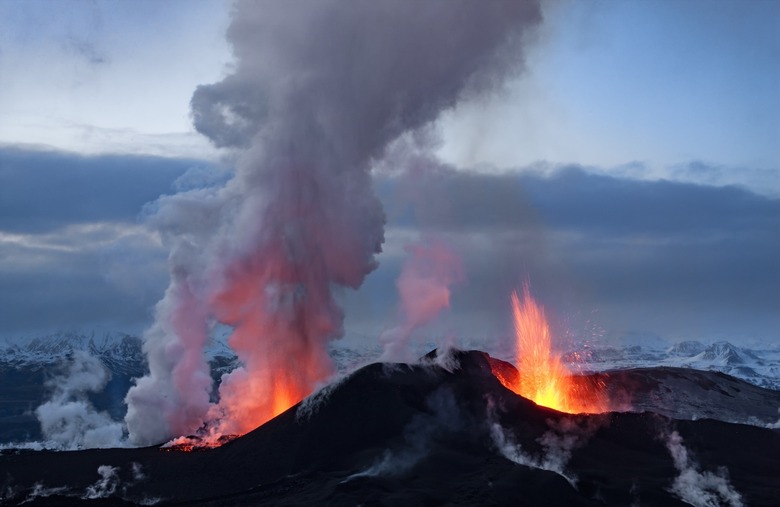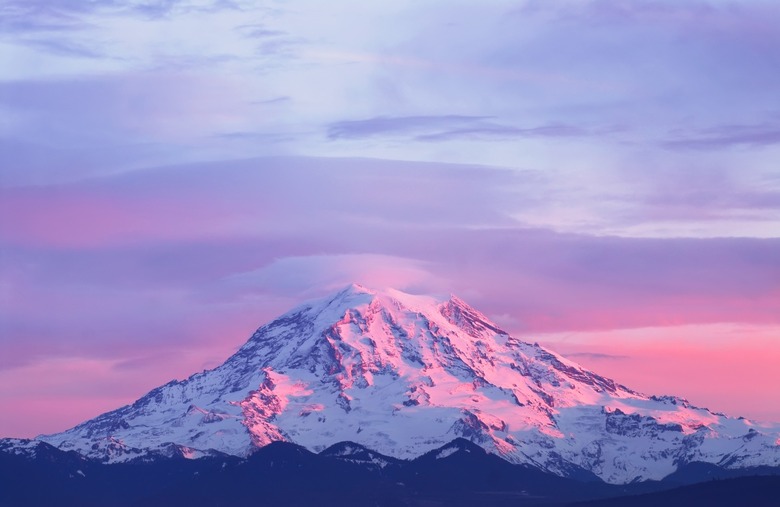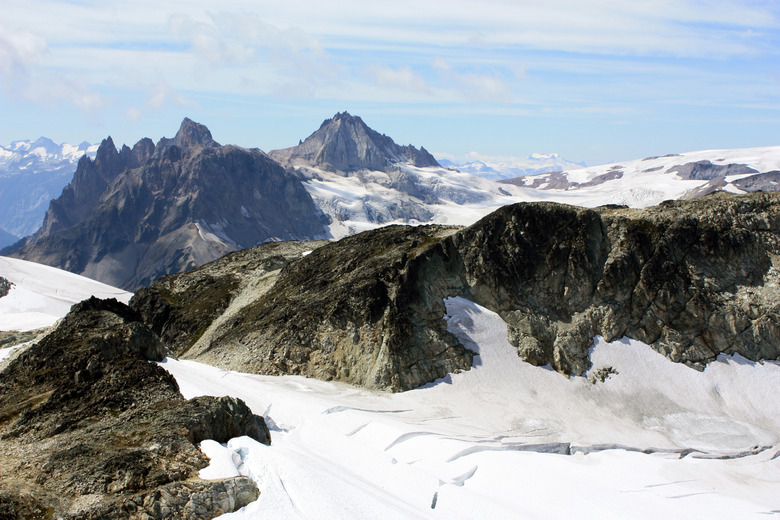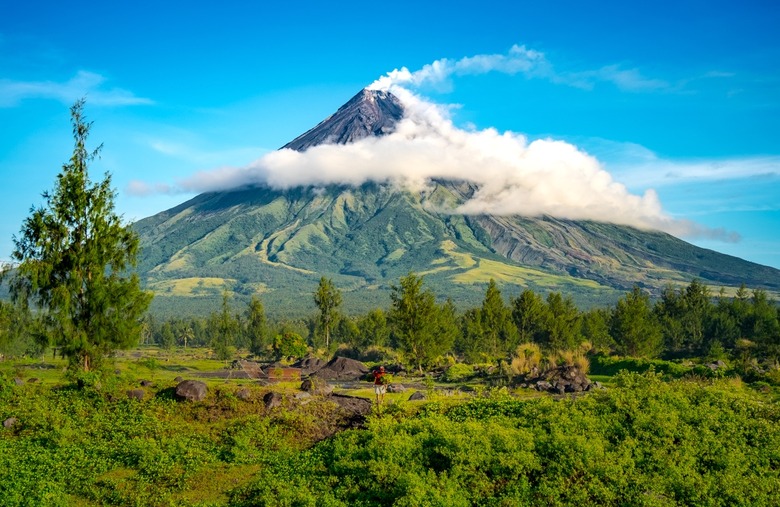You Might Not Know These Places Have Active Volcanoes
The U.S. Geological Survey estimates that there are 1,500 potentially active volcanoes worldwide, 500 of which have erupted in historical time (not including the many more on the seafloor). According to the Smithsonian Institute, around 46 are spewing volcanic matter right now, including Yasur in Vanuatu off the coast of Papua New Guinea, which has been erupting continuously for the last 245 years.
According to National Geographic, 75% of the planet's volcanoes sit along the "Ring of Fire," a 24,900-mile-long zone tracing trenches in the Pacific Ocean, characterized by volcanic activity and frequent earthquakes. There are volcanoes in many parts of the globe though, and unless you're a volcanologist, you might not know they exist.
Italy
Italy is home to three active volcanoes: Mount Etna, Stromboli and Mount Vesuvius. At 10,900 feet, Sicily's Mount Etna — named for the Greek word aithō, meaning "I burn" — is Europe's tallest, according to Britannica. The stratovolcano is also one of the world's most active, as it's erupted almost constantly over the course of history. The last eruption began in 2014 and is ongoing, though the last major occurrence happened in November 1928. That year, lava completely destroyed the nearby village of Mascali and a section of the Messina-Catania railway line.
Mount Vesuvius in Naples, on the other hand, is an active volcano that's famously responsible for burying the ancient Roman city of Pompeii in A.D. 79. As a result of the volcano's explosive eruption, 16,000 people died, 2,000 of whom were Pompeiian. The site was abandoned until 1798, when a group of explorers rediscovered mostly preserved buildings, skeletons and artifacts beneath dust and debris. Pompeii has since been designated as a UNESCO World Heritage site.
Greece
There are 10 volcanoes in Greece, but only two have erupted within the past 150 years: Nisyros and Santorini. Nisyros (located in the Aegean Sea) last erupted in 1888, but Santorini (located on an island of the same name) went off in 1950. Today it only emits steam and gases.
Santorini's claim to fame is the Minoan eruption. In 1650 B.C., when the island was known as Thera, it experienced a catastrophic eruption with a Volcanic Explosivity Index of 7 — the highest score being 8 — making it one of the earth's largest volcanic eruptions in history. This devastated the nearby city of Akrotiri, which, like Pompeii, was blanketed in ash. The total volume of material was a square mile of dirt 9 miles high, volcanologist Haraldur Sigurdsson told USA Today. It was 120 times more powerful than the 1980 eruption of Mount St. Helens.
Ethiopia
According to volcanologist and University of Oxford earth sciences professor David Pyle, there are nearly 60 volcanoes in Ethiopia, one of which — Erta Ale, or "smoking mountain" in the local Afar language — has been erupting continuously since 1873. This one is located in the Danakil Depression in the Afar Region, considered one of the hottest places on Earth.
Though the badland desert climate is hot and dry, Erta Ale has become a popular tourist destination. Volcanologist Arianna Soldati told National Geographic that this shield volcano boasts the only "somewhat accessible" lava lake in the world. Travelers can hire a tour guide to lead them to the scorching southernmost pit, which is often referred to as the "gateway to hell." Sometimes, due to pressure, it will spew lava in 6- to 13-foot-high plumes, according to Atlas Obscura.
Tanzania
Ol Doinyo Lengai is an active volcano in northern Tanzania, known to locals as the "Mountain of God." According to the U.S. Geological Survey, the 9,442-foot-tall peak is the only known active volcano that spews lava laden with carbonatite, which, at 930 to 1,100 degrees Fahrenheit, is the coolest lava on Earth. (For comparison, NASA reports typical lavas are about 1,300 to 2,200 degrees Fahrenheit.)
Even though Ol Doinyo Lengai's lava has a relatively low temperature, it's still hot enough to burn almost anything it touches. It also has a more fluid consistency than others, and can flow faster than a person can run. Ol Doinyo Lengai has erupted many times over the course of history, the most recent having started in 2017. That activity is ongoing.
Democratic Republic of the Congo
Two of Africa's most active volcanoes are in the Democratic Republic of the Congo: Nyamuragira, which has been erupting continuously since 2018, and Nyiragongo, which has been erupting continuously since 2002. In January of that year, Nyiragongo shot a river of lava through downtown Goma, the provincial capital of North Kivu, covering and collapsing 4,500 houses and buildings, according to volcanologist Hamaguchi Hiroyuki.
Volcanologist Carmen Solana told The Guardian that an estimated 245 people died as a result of the blast and 40% of the city was lost. Similarly in 1977, Nyiragongo's lava lake spilled out through a crack in the side of the volcano, covering 20 square kilometers. It destroyed 400 homes and took the lives of 70 people. One of the fastest lava flows ever was recorded in this instance: 60 kilometer per hour (37 mph).
France
The volcanoes are sleeping in mainland France, but one is awake in Réunion, a French island in the Indian Ocean just east of Madagascar. Volcanologist Arianna Soldati told National Geographic that every nine months or so, the island's shield volcano, Piton de la Fournaise, "puts on an amazing show of pyrotechnics." Despite the frequent activity, Explore France says it's not a danger to islanders. This UNESCO World Heritage site is the most visited attraction in Réunion. Tourists can explore the lunar landscape from top to bottom on foot, bike, horse, Segway or car.
Australia
According to the Australian government, there are two active volcanoes off the mainland, 2,485 miles south of Perth in the Australian Antarctic Territory of Heard Island and McDonald Islands. According to Australia's national science agency CSIRO, Heard Island is the largest of the group of islands, and its volcano, Big Ben, peaks at 2,745 meters, making it 517 meters taller than Mount Kosciuszko, mainland Australia's highest mountain.
The McDonald Islands also have a volcano, and it's so active that the McDonald Islands have doubled in area since 1980. This isn't a danger to civilians though. Nobody lives there. This UNESCO World Heritage site is incredibly cold and windy, so the only inhabitants are penguins, seabirds and seals.
New Zealand
All of New Zealand's volcanic activity is confined to the north island, where minor eruptions occur every few years. This is in Ring of Fire territory. The Oruanui eruption of the Taupo Volcano is one of the country's largest with a Volcanic Explosivity Index of 8 — the highest possible score. But that was about 27,000 years ago. According to GNS Science, Te Pū Ao, one of the nation's largest occurrences since Oruanui, the Taupo Eruption, shot over 30 miles into the air. The plume reportedly broke through the stratosphere and all of New Zealand was covered in at least 1 centimeter of ash around A.D. 180.
While it wasn't as large, Mount Tarawera's eruption in the summer of 1886 was disastrous. According to the New Zealand government, the volcano spattered for six hours, destroying several villages — Te Tapahoro, Moura, Te Ariki, Totarariki, Waingongongo and Te Wairoa — and a natural silica hot springs known as the Pink and White Terraces. It's estimated that 120 people were killed, many of which were Māori, the indigenous Polynesian people of New Zealand. Te Wairoa, the "buried city," is now a popular tourist attraction.
Russia
The Kamchatka Peninsula exists on the eastern part of Russia within the Ring of Fire. It's home to the volcanoes of Kamchatka, a string of about 160 volcanoes, 29 of which are still active. One of those is Klyuchevskaya Sopka, the most active volcano in Kamchatka and the highest volcano in Eurasia. According to a tourism website for the stratovolcano, the 4,835-meter-tall peak has powerful eruptions once every five years, but you can still climb it if you want. On foot, tourists typically make it to the top in a day or a day and a half. It's much faster if you take the bus.
In the summer of 2019, Bolshaya Udina, which is also a part of the volcanoes of Kamchatka, was re-classified as active. The stratovolcano was thought to be extinct until 2017, when increasing seismic activity was detected beneath it, scientists told CNN. Between 1999 and September 2017, approximately 100 weak seismic events were recorded. From October 2017 through February 2019, 2,400 more occurred. February 2019 also saw a magnitude 4.3 earthquake — the area's largest ever.
Indonesia
Indonesia is located in the Ring of Fire, making it one of the most seismically and volcanically active places in the world, according to the U.S. Geological Survey. In 1815, Tambora, located on the northern coast of Sumbawa, exploded in the largest volcanic eruption in recorded history, according to Britannica. It was approximately 36 cubic miles of ash, pumice and aerosols. This prevented sunlight from breaking through and eventually lowered the average global temperature by as much as 5.4 degrees Fahrenheit.
The blast, pyroclastic flows (ash, lava and gases) and tsunamis that followed took the lives of approximately 10,000 inhabitants and annihilated the homes of 35,000 more. Roughly 80,000 died from disease and starvation because the eruption completely ruined the farmland. The volcano remains active, but has only seen smaller eruptions since.
Chile
There are around 2,900 volcanoes in Chile, which is located in the Ring of Fire. Of those, 90 are active, according to a tourism website for the country. Villarrica, named after the lake and town it looms over, is one of Chile's most active. Even so, it draws thousands of visitors each year. The crater at its peak measures 200 meters in diameter, contains a lava lake and continuously emits smoke into the atmosphere. Some tourists take in the view from below, while others adventure to the top for sky-high views.
The highest volcano in the world is in the Andes on the Chile-Argentina border. Nevados Ojos del Salado is 6,891 meters (22,609 feet) above sea level. It's considered active, but its last eruption occurred in A.D. 750. Nevados Ojos del Salado also features the world's highest lake, according to a tourism site for the Andes. The body of water measures 100 meters in diameter and sits at 6,390 meters (20,964 feet).
Papua New Guinea
There are several active volcanoes in Papua New Guinea, one of which recently erupted for the first time in history. Kadovar, located on Kadovar Island 25 kilometers (15 miles) from the mainland, had only experienced a "possible" eruption in 1700, followed by thermal activity in 1976 and a short stint of seismic unrest in 2015. In 2018, ash and steam spewed over the island, covering more than half of it in debris within 24 hours. According to Reuters, 590 people were transported to the nearby island Blup Blup. Days later, the volcano exploded red rocks and sulphur dioxide, prompting an evacuation of approximately 1,500 from Blup Blup to the mainland.
Antarctica
Antarctica, one of the coldest and driest places on the planet, is in the Ring of Fire and has two active volcanoes: Erebus, which has been erupting continuously over the last few decades, and Deception Island, which most recently erupted in 1967, 1969 and 1970. Erebus is one of the few volcanoes in the world with a permanent lake of molten lava in its crater, according to National Geographic.
Prior to 2017, it was thought that Antarctica had just 47 volcanoes (active and dormant). But according to The Guardian, scientists recently discovered an additional 91 beneath the ice and, while an eruption won't reach the surface, it could melt the ice from beneath and raise global sea levels.
North Korea
Mount Paektu, a 2,750-meter-tall (9,022 feet) active volcano on the border between North Korea and China, is a "dangerous giant," according to National Geographic. It has been quiet for about 100 years, but no one knows if, or when, the peak might erupt again. The last eruption was in 1903.
Paektu (known as Changbai in Chinese) also contains a 5-kilometer-wide (3 miles), 850-meter-deep (2,788 feet) summit caldera filled by the scenic Lake Tianchi. Alas, the volcano is a mystery because "it shouldn't really be there." It isn't located where tectonic plates collide.
Iceland
Iceland houses around 130 volcanoes, 30 of which are active, according to a tourism website for the country. Because it sits directly across the Mid Atlantic Ridge, eruptions happen often. Some significant eruptions in recent times include Holuhraun in 2014, Grímsvötn in 2011 and Eyjafjallajökull in 2010. According to the BBC, Eyjafjallajökull caused a real mess for travelers. Flights were cancelled and airspace was closed temporarily in the U.K., Ireland, Denmark, Norway, Sweden, Finland and France because of ash, which could potentially damage plane engines.
Iceland's volcanic activity doesn't pose a huge threat to human life. Most volcanoes are far from civilization, and experts can often predict when one is about to go off. The unexpected can happen, though. According to a tourism site for the Westman Islands, one of the site's two volcanoes, Edlfell, erupted in 1973 and all of its inhabitants had to leave. Luckily, there was poor weather the day prior, so all the fishing boats were in the harbor and ready to transport people to safety.
United States
According to the U.S. Geological Survey, there are 160 potentially active volcanoes in America, all of which exist in the Ring of Fire. The majority are in Alaska (141 in total). The rest are located in California, Oregon, Washington, Hawaii, Utah, Idaho, New Mexico, Arizona, Nevada, Colorado and Wyoming.
The most destructive volcanic eruption in U.S. history was on May 18, 1980, when Mount St. Helens in Washington claimed the lives of 57. In 1912, Novarupta in Alaska erupted 30 times the volume, but because it's in such an isolated area, there was little property damage and no recorded deaths. America is also home to the world's largest active volcano, Mauna Loa, which is located in Hawaii.
Canada
Western Canada lies in the Ring of Fire and has active volcanoes. According to the Canadian government, there have been at least 49 eruptions in British Columbia and the Yukon Territory within the last 10,000 years. Some well-known examples include Garibaldi, Cayley and Meager, but there's also Nazko, Tseax, Lava Fork, Hoodo, Volcano Mountain and Edziza, which are all in remote areas.
The most recent eruption in Canada happened at Lava Fork approximately 150 years ago, which isn't very long ago from a geological standpoint. The Garibaldi Volcanic Belt, Wells Gray-Clearwater volcanic field, Northern Cordilleran volcanic province, Anahim Volcanic Belt and Wrangell Volcanic Belt all contain potentially active volcanoes, though the government isn't sure when they'll erupt again.
Philippines
The Philippines sits on the Ring of Fire, and is therefore volcanically active. The explosive Mayon Volcano in Legazpi City is largely regarded as the world's most perfect volcanic cone due to the symmetry of its shape, according to Britannica. Its most destructive eruption was in 1814, when it buried the town of Cagsawa and killed approximately 1,200 people. Mayon Volcano has erupted more than 30 times since 1616 — most recently in 2000, 2006, 2009, 2014 and 2018 — but the site proves popular with hikers and campers nonetheless. If your definition of "adventure" doesn't involve potential run-ins with molten lava, pitch a tent at one of the 50 most underrated parks in America instead.
